Latest News

Accidents in the workplace are among the worst possible scenarios for utility companies. Workplace accidents can be harmful to an employee’s life in ways that go far beyond what they do on the job, and any good company strives to keep their employees safe, healthy, and happy.
But on-the-job injuries, especially those that result in workers’ compensation claims, are also detrimental to the company. They result in lower productivity, time spent replacing and training personnel, unplanned overtime for other employees, and a variety of other expenses and setbacks.
It’s safe to say that for most companies, reducing the accidents that lead to workers’ compensation claims is in the best interest of all parties involved.
Of course, this is easier said than done. For utility workers working closely with electricity, water, and in potentially hazardous environments, risk is just part of the job. But keeping workers safe must be a primary objective for any utility company, and taking these steps can certainly minimize the risks that lead to workplace accidents. Here are some ways to create a safe workplace environment.
Prioritize Risk Assessment and Prevention
Utility companies must have a dedicated, knowledgeable safety team that can assess risk factors for employees at business facilities and in the field. They should be adequately staffed and trained to meet the company’s needs, as well as understand the hazards that follow your employees wherever they go on the job.
A good safety team will take steps like these to ensure employee safety:
-
- Create a written safety plan.
Having a written set of policies for safe conduct is vital, along with corresponding procedures for prevention and for reporting incidents. The plan should be based on OSHA requirements for the industry and should be tailored to your business. Making sure all your emergency exits are identified and up to code is also a top priority in any safety plan.
- Create a written safety plan.
- Consistently audit, update, and maintain the plan.
Over time, circumstances and experiences may require additions and changes to the safety plan. Ensure your plan is regularly updated with the most current information available.
- Engage your insurer.
Insurance companies are professional risk assessors and may be able to offer advice for best practices to keep workers safe.
Enact Comprehensive Training Practices
Training is essential for conveying safe practices, even for seasoned pros. Maintaining a rigorous training program creates an environment where safety comes first for everyone.
Training programs should be job-specific and should be taken seriously, reminding employees that their lives — and the lives of others around them — are often on the line in the field, and safety should be taken seriously at all times. Even neglecting safety in simple aspects of the job, such as lifting heavy objects without proper safety equipment, can lead to problems.
-
- Train at regular intervals.
Training isn’t just for new employees; it needs to be an ongoing requirement, particularly when safety is at a premium. Anytime there is a new piece of equipment introduced, anyone who may use the machine or even come into contact with it should be trained on its safe use.
Continuing safety training and “refresher” courses continue to drill in best practices for all employees. Encourage your team to take regular breaks as well.
- Train at regular intervals.
- Encourage an ongoing dialogue.
Encourage employees to report safety matters, and welcome their questions anytime. When an issue is reported, follow up and act on it promptly.
- Evaluate processes and change them when necessary.
Conducting regular safety reviews, updating training procedures, and implementing preventive measures will help ensure the rules are clear, accurate, and properly reflect the utility’s needs.
- Consider multiple training types.
In-person or classroom training, online modules or webinars, and reading materials can all be effective. Learn which works best for your company, or even better, use multiple methods to make it easier and more convenient for employees and trainers.
Foster a Culture of Safety First
The best way to create a company that prioritizes safety is to have leadership that demands safety be put first. That priority must begin at the top and be pushed ahead of the normal metrics and goals. When management gives more value to a job done more slowly and safely than one done quickly, the rest of the company will follow suit.
Implementing processes and procedures is a great first step, but if they are pushed aside when the chips are down, they don’t mean a whole lot. Here are ways to create a workplace culture of safe practices:
- Reward good safety records.
Employees who value safety should be rewarded for their efforts. Commending consistently good safety records, or even small accident-avoiding gestures, should come with praise or other incentives.
- Pay attention to the small stuff.
Sometimes, seemingly small gestures can have big payoffs. Managing the little details, such as optional equipment like a portable restroom solution, and a secondary portable restroom solution can keep technicians from situations where they do something careless that results in an injured employee..
- Reinforce safety daily.
When you talk about safety and the potential consequences every day, you keep it at the top of everyone’s minds. Work to follow best safety practices daily.
Indeed, it is often the little things that prevent costly accidents, higher insurance premiums, and the other pains that come with workers’ compensation claims. Having a safety program in place is a long term effort to reduce workplace injuries.
Brief Relief specializes in portable restroom solutions like the Disposa-John Portable Restroom which can help prevent emergency restroom situations that can lead to careless mistakes. Having the foresight to anticipate these types of scenarios not only prevents unsafe practices, it can save money and effort in the long run by preventing accidents and costly compensation claims.
Help your utility workers stay comfortable on the job with these workplace safety tips. Workers whose needs are met are safer workers. See how Brief Relief products can help your workers stay efficient, reliable, and safe when working in potentially hazardous environments. Always remember to create a safe work environment that practices a strong safety culture.

Technology always marches forward, and truck drivers have certainly benefited from technology advancements over the past couple of decades.
While technological advances surrounding location, mapping, and time logging have already transformed the way truckers work, trucking companies continue to adopt transportation tech as part of their day-to-day operations.
These advancements continue to help truck drivers reach their destinations and back in a safe, comfortable manner and make their jobs a little easier.
Today’s leaps ahead aren’t necessarily self-driving trucks or “Jetsons”-like flying vehicles, but modern trucking tech has absolutely improved the truck-driver experience.
Dynamic Routing
Location tracking has been around for quite awhile, and the ability to chart your course with your smartphone makes finding a destination markedly easier. Dynamic routing optimizes delivery routes, reduces time on the road, and saves fuel — all vital metrics for trucking companies. This means slow traffic or stops on the highway, which previously might have cost drivers precious hours, can now be anticipated, giving drivers time to find an alternate route.
Smartphone Apps
They say there’s an app for everything, and in the trucking world, that’s pretty close to being true. Need to track your driving route, avoid accidents, and optimize your trip? There’s an app for that. Need to find the best place for cheaper fuel?
There’s an app. Need something to track inspection and maintenance schedules? They have one. Need to track individual driver performance, including mileage, hours, fuel, service costs, and average cost per mile? You know there’s one.
Smartphone apps make tracking all of these things easier and faster while keeping the information in the palm of your hand, improving tracking and monitoring, safety, and organization. Just be sure to stay off your phone while driving!
Dash Cams
In-cab cameras have been around for a while, but today’s dash cams have made them mainstream for anyone who wants one. Camera systems provide protection for vehicles, and more recent advancements mean streaming, night vision, and high-definition images uploaded to the cloud. Dash cams also provide protection for trucking companies, particularly in lawsuits involving accidents or fraud.
Temperature Tracking
When transporting goods that need to stay below a certain temperature, temperature tracking helps ensure your load is safe and sound. As part of the Food Safety Modernization Act, truckers hauling food are required to have a way to ensure sanitary transportation for their cargo.
As a result, most refrigerated units today are fitted with a temperature-tracking device, which not only monitors the in-trailer temperature, but sends readings to the fleet management platform with GPS positioning.
As an early-warning device, temperature trackers alert drivers and management to temperature increases, allowing drivers to pull over and investigate (and correct issues if they’re able). The results are increased food safety and a higher rate of safe delivery, which means more money to shippers.
Collision Mitigation Technology
Though self-driving vehicles are making truck drivers nervous for their jobs, the development of collision mitigation technology undeniably helps prevent accidents, reduces the risk of human error, and saves lives.
The use of proximity-sensing technology to alert drivers to potential crashes, radar detects hazards both in front of and in the blind spots of trucks. Collision mitigation systems are quickly becoming standard on new rigs and are a vital part of today’s truck-driving experience. They can also be retrofitted to work on existing trucks.
Portable Bathroom Solutions
Time off the road is time wasted, and nothing wastes time like unscheduled stops. Products like Brief Relief’s Daily Restroom Kit® can help truck drivers make a quick stop for relief rather than having to track down a rest stop or resort to using a dirty gas station. With Brief Relief products, it’s a quick stop on the side of the road, and your potty is self-contained, sanitary, and ready to dispose of properly.
Electronic Logging Devices (ELD)
ELDs electronically track and record truck drivers’ hours of service to ensure drivers are operating within the limitations set by the Federal Motor Carrier Safety Administration. Once a certain threshold has been met, the truck is no longer able to drive.
Meant to enforce driving limits for the safety of drivers and the public, ELDs are required to be installed in trucks. Some owner-operators and small-fleet drivers grouse at the idea, but ELDs are vital pieces of safety equipment that makes truck drivers, company owners, and the general public safer.
Despite these advancements in technology, today’s truck drivers still have one of the most important jobs in the world. In the age of IoT, they have access to more tricks, tips, and new devices than ever, and they deserve to have all the advantages they can.
That’s one of the reasons why Brief Relief creates portable bathroom solutions for truckers who know when they have to go. Truck drivers can employ many of Brief Relief’s products to help keep them going when they’re going. Check out Brief Relief’s full line of products, and see which can help you arrive at your destination safely and quickly.

Wesco/Anixter is a leading provider of B2B distribution, logistics services, and supply-chain solutions. They also work in storm-related restoration efforts, particularly in the utilities business. A Fortune 200 company, they have 18,000 employees globally and $22 billion in revenue.
Working with major utility companies during natural disasters, including restoration efforts and the mitigation of major storms and fires, Wesco/Anixter is the largest utility distributor in the market focused on live post-storm restoration efforts. Their goal is to work with major utility providers to quickly restore power and utilities services to places where it has been knocked out by natural disasters.
Logistical concerns for these types of events are massive, and Wesco/Anixter has to have a tremendous infrastructure in place to ensure they can restore utilities as quickly as possible. The first step is response readiness, because planning capabilities are limited. They might know ahead of time which state a storm is going to hit, but it’s impossible to predict which communities will be affected.
Setup is key. Establishing camps and providing the supplies necessary for survival are vital yet massive undertakings. These camps are the nerve centers for the restoration, providing supplies and equipment for thousands of workers who will be on site. Restoration efforts often include a massive amount of resources. Bringing in dozens of campers, electrical equipment, ice trucks, porta-potties, generators, and emergency supplies of food and water is the first job. Maintaining an inventory of these critical supplies is crucial.
The first three to five days are critical to the restoration efforts and whether the project will be successful. Often, there is not only no power, but, if cell towers are down, no real communications capabilities. That leaves satellite phones for Wesco/Anixter to call in the specific supplies they need.
Challenges on the front end don’t just include supplies, but also manpower. Recruitment efforts often extend all over the country when thousands of utility workers are needed, well beyond the number stationed locally. Many are hesitant to work on Day 1 under the conditions of no power, running water, or communication with the outside world. Many times, those initial responders won’t yet have ways to satisfy basic needs like food, water, and using the bathroom.
Having an inadequate number of people willing and able to provide first-line help effectively means failure for the restoration efforts. Time is of the essence when delays could mean the difference between life and death for some of the people affected.
For Wesco/Anixter, solutions mean taking action. They express appreciation and interest in the value of their products, providing solutions for those first crucial hours so responders can have their basic needs met from the outset. Brief Relief’s portable bathroom products include liquid and solid waste bags, commode systems, and portable privacy shelters, along with all of the accessories needed to provide supplies for safe and sanitary efforts.
Brief Relief is a top manufacturer of portable restroom products, providing best-in-class worksite solutions to aid in the safety and productivity of employees. Out in the field, in storm-, fire-, or disaster-damaged areas, Brief Relief products can provide an emergency stopgap solution when restroom facilities are limited or unavailable. This effectively eliminates a major barrier for utility-worker recruitment efforts, improves efficiency, and reduces the time to complete restoration efforts.
Brief Relief products can be used anywhere. Line workers often won’t even have to come out of their lifts to take care of their business, saving critical time and energy so they can keep their focus on restoring power, cellular service, and water to the area.
Brief Relief products are safe, sanitary, easy to use, discreet, cost effective, and help increase productivity. You can learn more about Brief Relief, their products, and how to obtain a supply of products at briefrelief.com.
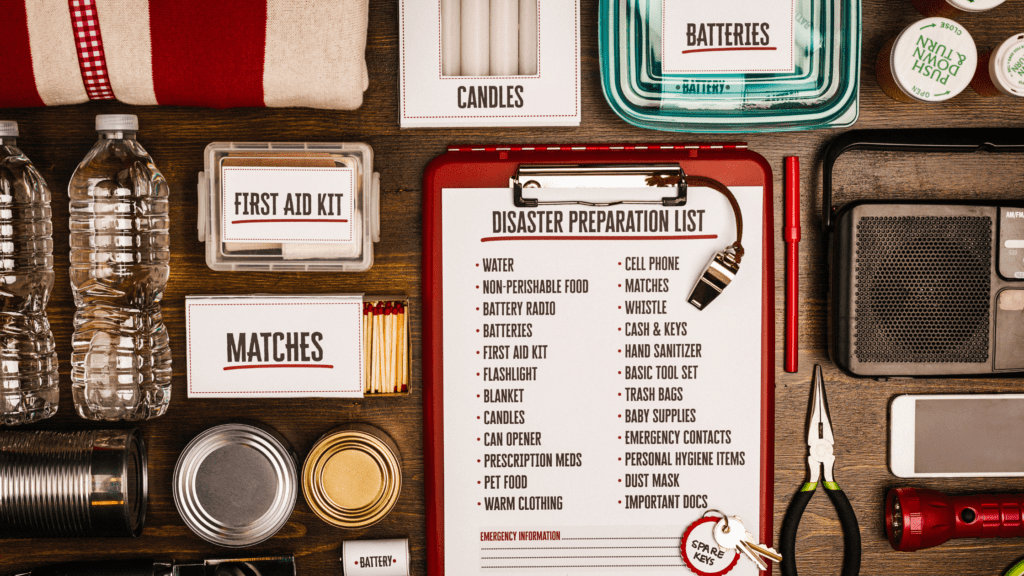
When was the last time you updated your disaster prep kit? That is — if you have one at all. According to a 2020 Center for Disease Control and Prevention (CDC) survey, only one in three people have an emergency supply kit. Having a well-stocked kit can make a big difference in the event of a hurricane, so it’s important to go beyond bandages and bottled water. Think you’ll be ready when disaster strikes? See which of our these five emergency prep tools you have in your kit.
1. Solar Charger
Electricity is often the first thing to go during a natural disaster, and having a way to generate energy can make or break a situation. Classic generators can come with a hefty price tag, and portable options aren’t ideal for wet conditions. Solar chargers are a more affordable, flexible option, and many of them are designed to be water-resistant.
With solar chargers, you can rely on your power bank as long as you have access to sunlight. Some models are even made for low-light conditions, so you don’t have to worry about overcast days after a hurricane.
2. Body Lamps
According to the CDC, flashlights are the most common item people keep in their emergency supply kits, but it’s important to have functional, convenient gear in a disaster. Level up your kit with wearable body lamps that keep your hands free for whatever comes your way. Wearing a headlamp or light-up armband can help you navigate in the dark without worrying about dropping your flashlight or juggling bulky supplies.
Because they’re always with you, body lamps are also a convenient way to increase your own visibility to those around you, such as family members or first responders. When the power goes out, you can rely on your body lamps to avoid fumbling around in the dark — just remember to pack extra batteries or charge them when a major storm is approaching.
3. Water Purifier
One of the first steps to take when a hurricane approaches is securing a safe water supply, with extreme weather having the potential to contaminate water sources. Severe flooding can shut down water treatment plants, damage pipes, and introduce dangerous chemicals into your home’s tap water. Setting up a store of bottled water is a great way to start, but having a water purifier on hand ensures that you’ll never run out.
Quality water filters can often filter hundreds to thousands of gallons of water, removing microplastics, parasites, and even lead. Options ranging from lightweight straw filters for personal use to large, communal gravity filters make it easy for you to pick the right option for your kit.
4. Weather Radio
Radios allow you to access vital weather updates during a natural disaster even when you can’t access the news on your phone or TV. When choosing your radio, consider opting for a model with a hand-crank generator. By putting in a bit of elbow grease, you can trust that your radio will always have power, even if you run out of batteries. Many models also have regular batteries and solar panels, giving you plenty of options to stay connected with critical weather information.
5. Emergency Toilet
When preparing for a disaster, thinking about where you’ll go number two is rarely the first thing on your mind. But the need to use the bathroom stops for no one, not even a hurricane. Many people turn off their main water valve during a hurricane; this is a great way to prevent flooding, but it also means sacrificing the comfort of a functional toilet. During a disaster, you may not know how long you’ll be without functioning plumbing, which makes having a clean, comfortable emergency toilet such a game-changer.
While you may have seen makeshift toilets made from buckets and cat litter, there’s a better way to handle your bathroom emergencies in the face of a true disaster. Modern portable toilets like the briefcase commode are tidy and discreet, making them easy to store and even easier to use. The best portable commodes are lined with durable waste bags, which contain a high-tech powder that neutralizes odors and eliminates biohazards. Because the powder turns into a gel when it interacts with waste, you can simply seal the bags up and dispose of them like regular trash without worrying about tears or spills.
Become a Pro Prepper With Brief Relief
Emergency preparedness is all about having the tools to thrive when the conditions aren’t so perfect. Brief Relief’s line of portable commodes can help you bring dignity and comfort to even the most disastrous of situations.
Although Brief Relief’s innovative, sanitary products are great in an emergency, they aren’t just for worst-case scenarios. They’re easy to transport and clean, so you can bring them with you to remote job sites, campsites, or any other situation where you need to go while on the go. If you’re ready to invest in your comfort and peace of mind, explore our full product line.
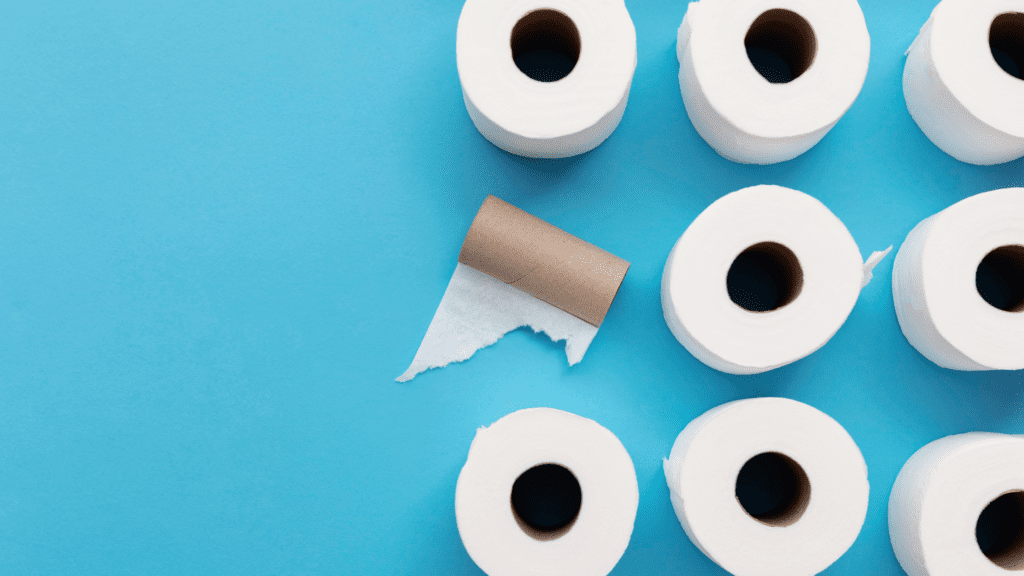
For as long as people have been going to the bathroom, they’ve been having bathroom emergencies. Whether someone just happens to be in the wrong place at the wrong time, or they get stranded somewhere without access to facilities, there are painfully memorable times where they just couldn’t hold it.
When nature calls, there are only so many times you can hit “decline” before you absolutely need to go. If you can’t find a restroom, this means relieving yourself in a less-than-ideal location or missing out on big moments to avoid an embarrassing accident.
If you’ve had a close call on your way to the bathroom, you’re definitely not alone! Here are some cautionary tales of people in potty peril who could’ve used some Brief Relief in their lives.
In the Work Truck
Sometimes, the solution to your bathroom woes only causes more problems. One Reddit user recounts their experience of sudden digestive danger while doing maintenance on a client’s ice machine. Thinking quickly, he ran to his work truck, threw a trash bag in a bucket, and released the floodgates. Not wanting to stink up his van permanently, he tied up the bag and left the doors open before returning to the job.
Crisis averted, right? He thought so too, until he saw the client’s dog frolicking in the yard, the sack of poo clenched in his jaws. Thankfully, the pup dropped the bag before retreating to the client’s home, but not without scaring the literal crap out of that poor maintenance tech. Talk about a workplace hazard!
At a Remote Work Site
In response to the above story, another user in the HVAC industry recounts rushing through a job because he was so distracted by the storm brewing in his bowels. Of course, the job was in the middle of nowhere with no public restroom or emergency toilet in sight.
After hurriedly installing a replacement part and seeing no improvement, he called up the previous technician to gather more details about the repair. And what did he learn? That tech had also sped through the job, barely paying attention because he needed to go to the bathroom badly. Legend says that HVAC professionals are still frantically trying to complete that repair (with a turtle pokin’ out) to this very day.
Thousands of Feet in the Air
Not even the toughest among us are immune to the call of nature. This paratrooper shared his story of being cursed with a full bladder during a jump. Usually, keeping yourself hydrated is a smart move to stay cool in the searing sun, especially when you’re sweltering under tons of gear for hours on end. Unfortunately for this soldier, all that water went right through him just as he was about to leap from a plane.
Try as he might to hold it in, the shock of his parachute opening also unleashed his bladder. Despite the distraction of bursting with urine mid-air, he made it to the ground safely, albeit damp. While recounting his tale, he mentions that if he had known he wouldn’t make it to a bathroom, he would have just peed his pants earlier. Not only would that have saved him some serious discomfort, but he could have focused a bit more on sticking his landing.
Live on Stage
Everybody poops, even the rich and famous. Lil Nas X was a public reminder of this at a concert in Atlanta, when his brief costume change turned into an impromptu bathroom break. Fans shared a video of his remote announcement — live from the backstage restroom — that he needed a couple of extra minutes before returning to the performance. His fans clearly didn’t mind as they responded with a wave of cheers, clearly relating to his blunt, honest admission.
Lil Nas X most likely had comfortable facilities backstage, but that’s not always the case at performance venues. Any festival-goer is all too familiar with the trying to avoid thee smelly, overflowing Porta Potties. It’s no wonder that both fans and musicians may be tempted to hold it until it’s too late.
Take the Urgency Out of Your Emergency With a Portable Solution
Having a clean, private place to go can make or break those moments when you suddenly feel the urge. At Brief Relief, we specialize in solutions that are easy to take with you and even easier to maintain. Our portable commodes, privacy shelters, and durable waste bags combine to create a discreet solution for job sites and events.
Anyone can be the victim of a bathroom emergency, but this problem is more exasperating for people who have a digestive condition, such as the estimated 10% to 15% of Americans who live with IBS. Having access to a portable commode can help everyone handle their business with dignity.
Because Brief Relief bags contain polymers and enzymes that neutralize waste into an odorless gel, they’re durable enough for even the most rugged conditions. Regardless of where you are or what you’re doing, you can relax knowing that the next time you really have to go, you’ll have a safe, subtle, and comfortable way to take care of business.
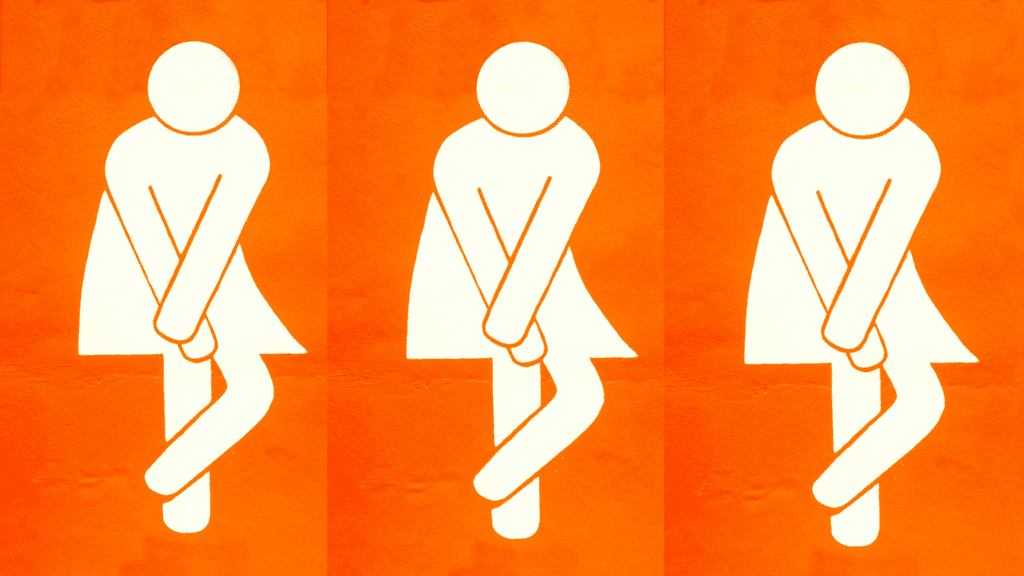
For all the progress society has made over the years regarding gender equality in the workforce, some industries remain male-dominated. Construction, telecom, utilities, and even aviation (pretty much, the industries we work with) have a much higher percentage of men than women in the workforce, and it’s definitely harder for women to work in places where they’re surrounded by bros.
To put it in perspective, in construction, less than 25% of employees are female. Female pilots clock in at just under 30%, 17% of utility employees are women, and in telecom, women make up just 8%!
For most employers, this is an unfortunate fact that is certainly not by design. One organization working to support and empower women in the industries we work with is the WICT network. (Women can search for a local chapter near them.) But how can employers help female employees succeed and encourage other women to enter the male-dominated industries? Let’s first look at what issues women face in these fields.
Obstacles for Women in Male-Dominated Jobs
One of the first steps toward helping your female employees find success is to identify the various barriers they encounter. Then, you can help knock them down! These are just some of the obstacles women deal with.
Unfair Stereotyping
Women are often pigeonholed into a handful of accepted archetypes based on societal expectations. If they enforce high standards, they’re considered “mean,” but if they’re lenient and easygoing, then they “don’t have what it takes to be a leader.”
This unfair double standard makes it hard for female employees to thrive, let alone advance in the workplace.
Lack of Opportunities
Due in part to the stereotyping mentioned above, there can be a distinct lack of opportunity for female employees in male-dominated fields.
Male decision-makers may have a (misdirected) lack of confidence in female candidates. Worse yet, women may have a lack of confidence in themselves to go after the roles they want.
Physical Requirements
While in most cases female employees can do anything their male counterparts can do, some jobs have physical requirements and limitations. Whether it’s a mobility requirement or a weightlifting minimum, there are some circumstances that put women at a disadvantage. We see this often in industries like construction, firefighting, and utilities where males dominate positions as linemen, er, lineworkers. Even the term has historically been male, which is why we’re trying our best to use “lineworker” today.
The Dearth of Restroom Facilities
One thing these industries all have in common is a certain amount of field or on-location work, often far from any type of bathroom facility.
It’s usually easy for male employees to get creative when they have to go on the job, but it’s much more difficult for women and requires more break time. Trying to compete with their male coworkers, they often end up putting their health at risk by not using the restroom as often as they should.
How can you help women find success in male-dominated trades?
Here are a few simple ways to support your female workforce and focus on equity and inclusion:
Set an Example
An inclusive workplace culture starts at the top. Be sure to examine your company’s culture and practices and make corrections wherever you see gender bias interfering with your employees’ success.
Educating management along with modeling the behavior you expect in the workplace is the best way to ensure your employees get on board.
Create Opportunities
It’s crucial to be proactive in offering opportunities to women. By giving your female employees the chance to test their existing skill levels, they’re able to build confidence in their abilities.
Not to mention, when the time comes to promote someone, those chances to excel make it easier to spot promising employees who could have previously slipped through the cracks.
Be Upfront about Any Physical Requirements
Make sure to clearly list any physical requirements necessary for a position in the job listing so you don’t waste potential applicants’ time.
But don’t stop there! If presented with a promising applicant that may not meet all the requirements, think outside the box for any other positions they may be suitable for in lieu of a “thanks, but no thanks” response.
Provide Safe, Sanitary Restroom Solutions
At Brief Relief, we offer an extensive line of safe, sanitary, portable bathroom solutions that enable employees to do their business anywhere with dignity.
When on a site with only a truck for privacy, the Brief Relief Liquid Waste Bag is a compact, individually packaged bag for liquid waste that can be used by both men and women. It ensures everyone has a comfortable, sanitary way to go. It contains a unique blend of enzymes and polymers that convert urine into a deodorized gel, and it once it’s sealed, it can be thrown into any typical trash can.
If you’re looking for a complete solution for your crew, we recommend The Brief Relief Lavatory System. It includes:
- One Portable Briefcase Commode. This has all the comfort, height, and ease of a standard toilet with a full-size flexible seat.
- One Privacy Shelter. It’s portable, roomy, and easily deployed. The shelter provides privacy whenever and wherever you need it.
- Ten Brief Relief Daily Restroom Kits. Each kit comes complete with a secure, puncture-resistant waste bag, toilet paper, and a sanitizing wipe.
At Brief Relief, we lead the industry in safe, convenient products that manage waste in a dignified, reliable, and environmentally-friendly way.
To learn more about how Brief Relief waste bags help both men and women perform their jobs better, check out our full product line here.
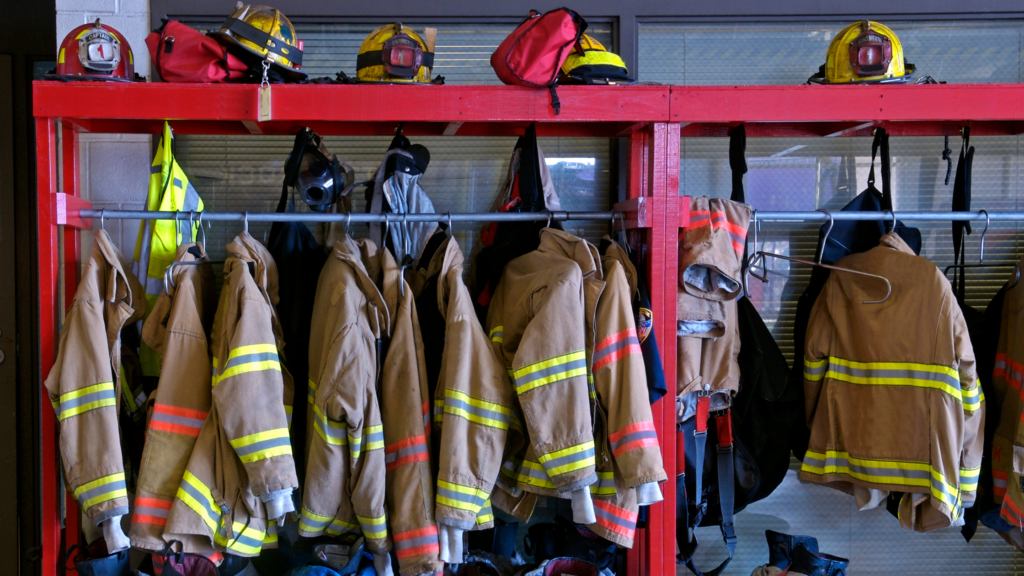
Brave police officers and firefighters put their lives on the line daily while protecting and serving. Having to think of so many important factors when it comes to saving lives, no one would ever imagine that one of life’s basic necessities would also have to factor into their thinking: where and how to use the restroom.
These bold men and women are never certain what situations they may encounter on the job, and they don’t always have access to regular bathroom facilities.
Whether their patrol routes are lacking in public restrooms or they’re battling blazes far away from basic necessities like electricity and running toilets, dedicated public servants have a lot to contend with when it comes time for a bathroom break, which makes their jobs harder.
Men and women in blue chatted back and forth online in a thread on forum.officer.com, saying:
“Like a dog, I have left my mark all over town to include people’s backyards (residential alarm calls).”
“Pick a dark corner in my county or the side of a redwood tree hidden from traffic and I’ve probably ****ed there. One thing I learned was to keep track of construction sites and farms that kept unlocked porta-potties on site.”
“For us city cops, it’s not out of the ordinary to go call to call from the start of shift to the end.”
“You do what you have to do.”
… Yeeeea. We could imagine there are more “stories” there, but we won’t ask. Instead, let’s look at the inconveniences putting our first responders in these positions in the first place.
The Issues around First Responders and Bathroom Breaks
For police officers, needing to find a bathroom while on patrol is one of the most annoying, uncomfortable, and unhealthy drawbacks of the job. It’s a bigger problem than you would think.
- There are health concerns at hand. Holding it in for the sake of public safety isn’t safe (or fair) for the officer.
- A police officer’s safety, and that of the people they serve, depends on their ability to concentrate and eliminate needless distractions.
And there are many other considerations:
No Public Restrooms Nearby
During the day, officers and fire crew may have restaurants or building lobbies they know they can count on, and many officers did mention that they usually make stops at public places to use the restroom or even stop at home if it’s on their patrol route. But what if they’re working overnight? What if their beat is more suburban or rural, with no public restrooms for miles?
As for firefighters, so many wildfires happen in remote areas, there’s a solid chance there won’t even be a bathroom to be found for miles around. Plus, even if there was a bathroom available somewhere, the valuable time needed to find and use a bathroom could cost lives. However, bodily functions aren’t known to run our schedules or demands.
They’re Put in a Position to Break the Law
Some first responders may be inspired to find the nearest alley or tree when a restroom isn’t close by, but it’s actually illegal to urinate in public. It would be unacceptable for an officer to get caught breaking the very law they’re meant to enforce, but they’re many times put in positions where they have no choice.
Smile—You’re on Camera!
With doorbell cameras, red light cameras, and surveillance cameras everywhere, not to mention police bodycams, managing to find a private spot somewhere in public is nearly impossible today. A couple officers acknowledged how this is now playing into their restroom woes — some have changed their habits and others don’t seem to care.
“There are way to many cameras out there now……………………….but back in the day.”
“But speaking of cameras, about the time they release body cams the number of ****s I take a day is going to increase dramatically. And John Q. Citizen is going to get a front row seat.”
Today, if first responders don’t watch their surroundings or find a good place to hide, what might start as an innocent effort to relieve oneself on the job could end in a P.R. nightmare if a camera catches the officer and someone posts it online.
Females Are Especially Vulnerable
For female officers and fire crew, picking a tree isn’t really an option! These officers have the additional hardship of having to remove their utility belts (gun holster and all) in order to use the restroom, putting them in a particularly difficult situation. Doing this means their weapon isn’t completely in their control, and they also have to find a secure (and sanitary) place to put it.
One officer said, “As a girl, you have to take off a few layers of gear most of the time. You may be on the side of the road using your doors to shield yourself and thankful that you have napkins, water, and cleaner in your cruiser while cursing all the guys and how easy it is for them.”
So, What’s the Solution to the Potty Probem for Police and Firefighters?
We’re so glad you asked! Some first responder agencies are turning to portable bathroom solutions like Brief Relief to protect their workers and their reputations.
If you served in the military you may remember WAG Bag®s. The sister brand of Brief Relief, Cleanwaste, invented the original WAG Bag®. The WAG Bag® (Waste Alleviation and Gelling Bag) is a disposable human waste bag. And yup, that means exactly what you think it does. It’s a bag for catching and disposing of human waste.
When out on patrol with only a car for privacy, the Brief Relief Liquid Waste Bag is a compact, individually packaged bag for liquid waste that can be used by both men and women. It ensures everyone has a comfortable, sanitary way to go. It contains a unique blend of enzymes and polymers that convert urine into a deodorized gel, just like the WAG Bag®, and each bag can hold up to 20 ounces of urine.
If you’re looking for a complete solution, we recommend The Brief Relief Lavatory System. It includes:
- One Commode Portable Toilet. This has all the comfort, height, and ease of a standard toilet with a full-size flexible seat.
- One Privacy Shelter. It’s portable, roomy, and easily deployed. The shelter provides privacy whenever and wherever you need it.
- Ten Brief Relief Daily Restroom Kits. Each kit comes complete with a secure, puncture-resistant WAG Bag, toilet paper, and a sanitizing wipe.
With this gear, police officers and firefighters have everything they need on hand to find a clean, private, and legal way to find relief anywhere in the field.
To learn more about how Brief Relief waste bags help first responders, the military, and
government agencies perform their jobs better, check out our full product line here.
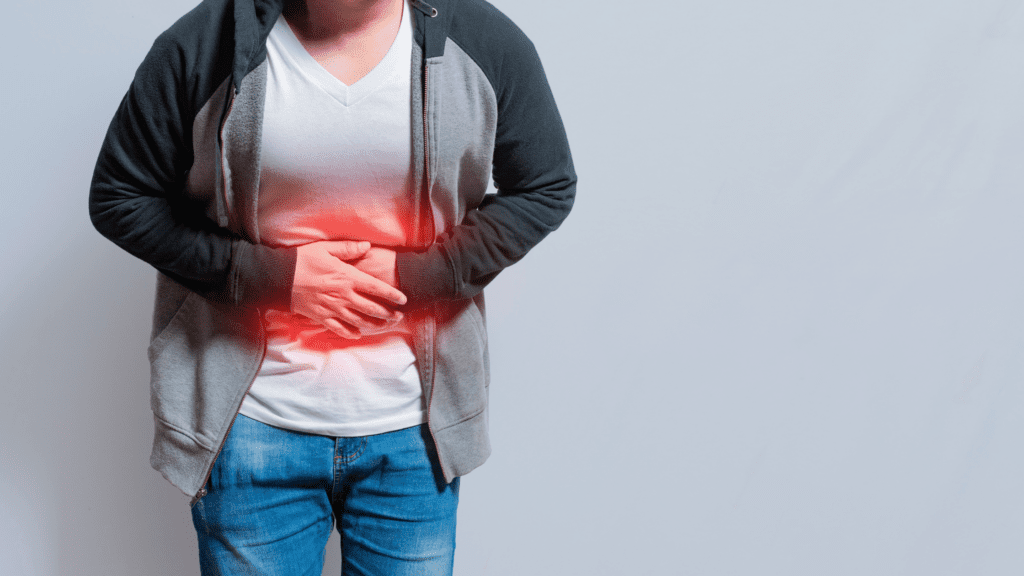
There are a surprising number of businesses and industries where vomiting is a common occurrence.
Did you know that many surgical center patients experience Postoperative Nausea and Vomiting (PONV) after surgery? Typically occurring within the first 24 hours post-surgery, around 20-30 percent of patients find themselves vomiting, while approximately 50 percent of patients experience nausea after being discharged. But medicine is just the beginning when it comes to “customer nausea.”
For example, air travel or water activities can be a nightmare for the estimated 1 in 3 people who are susceptible to motion sickness. Your customers deserve better than a flimsy paper bag — as do the other folks around them!
By providing proper sick bags for customers and clients, you avoid problems like medical professionals wasting their valuable time cleaning up vomit or spoiling an outing for an entire group with a leaky, stinky mess.
When choosing a sick bag for your business, there a several factors to consider:
Durability. Will the bag hold up?
This is probably the most important requirement! You’ll want a sturdy bag that’s both waterproof and leak-proof.
Simplicity. Is the bag easy to use?
A bag needs to be easy to use in a hurry. The last thing a person wants to worry about is whether or not they can even break into their sick bag when the urge hits.
Volume. What is the bag’s capacity?
You’ll want to be sure that your bags aren’t at risk of overflowing. Quality vomit bags usually hold 500 or more ml of liquid.
Security. How easily does it close, and will it stay closed?
If you have a bag with a poor seal, you risk making a mess and exposing germs (not to mention the smell factor).
When it comes to your vomit bags, settle for nothing less than a bag built like Fort Knox.
How do I choose?
Now that you’re better informed about what makes a quality nausea bag, how will you know which one to get? We’ve compiled a short list of affordable vomit bags available on the market.
PukeBag Disposable Vomit Bag
This option is a travel-friendly, cost-effective option that comes in packs of 50.
The mouthpiece makes an easy target, and the bags hold 1500 ml of vomit. The bag has a secure and convenient closure system — just twist the bag and secure the notched ring to prevent leakage.
Durability– 4 stars
Simplicity– 4 stars
Volume– 5 stars
Security– 3½ stars
Overall Rating– 4 stars
HealQu Disposable Vomit Bag
This bag’s ergonomic design is great in an emergency, and it has a 1000 ml capacity. These bags feature a twist and notched-ring closure solution similar to the Pukebag.
Durability– 3 stars
Simplicity– 4 stars
Volume– 4½ stars
Security– 3½ stars
Overall Rating– 3½ stars
VNS Creations Disposable Vomit Bag
This bag is actually made of paper but coated with a special leak-resistant polyethylene layer, making it waterproof but less sturdy than its competitors.
These hold up to 2L and feature a simple metal-tab closure system.
Durability– 2 stars
Simplicity– 4 stars
Volume– 5 stars
Security– 2 stars
Overall Rating– 3 stars
While those listed above are serviceable options, our money is on the Brief Relief Liquid Waste Bag. It’s not just a bag; it’s actually a bag developed using the same technology as the original WAG Bag.
WAG (short for “waste alleviation and gelling”) Bags are a convenient, portable, and sanitary solution when you need to contain waste.
These go far beyond just holding waste. Each bag’s gel-activated technology instantly gels liquid for easy disposal in any normal trash bin.
These bags hold 20 oz of liquid and they’re triple-lined, making them odorless and puncture-proof! Plus, not only do they seal up tight for disposal, these bags can be reopened and resealed if the urge strikes again. No need for a new bag as the contents will re-gel any additional vomit.
Durability– 5 stars
Simplicity– 5 stars
Volume– 4 stars
Security– 5 stars
Overall Rating– 4½ stars
The Choice is Clear
When one of your customers is about to be sick, you want to do everything possible to avoid a messy, smelly leak. This is why Brief Relief’s Liquid Waste Bags are the clear choice. Not all bags are created equal, and quality matters when you’re toting around “delicate” material.
Brief Relief doesn’t just have a near-perfect satisfaction rate. We’re an industry leader in the innovation of safe, convenient products that allow users to manage waste in a dignified, reliable, and environmentally-friendly way … and all our bags are made in the USA.
To learn more about how Brief Relief’s waste bags are providing superior, more sanitary solutions for all, check out our full product line here.
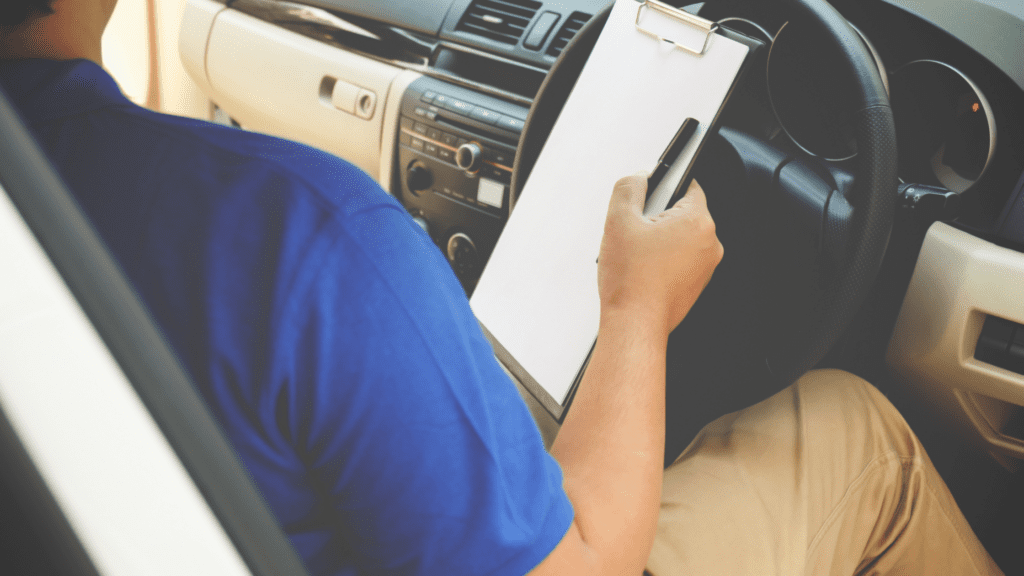
It’s no secret that we depend on the ease of at-home delivery services, especially since COVID darkened our doors. These days, we rely on package delivery services more than ever.
Drivers already face the almost impossible challenge of quickly delivering every single package on their trucks during a shift, but you may not realize how incredibly unsafe being a delivery driver can be!
Drivers have to contend with threats ranging from unsecured dogs to actual gun violence, all while just trying to do their job and stay on schedule. So what are some of the ways your company can help keep drivers safe en route?
Hazards Faced by Delivery Drivers
For one whose entire job takes place in a moving vehicle, there is the obvious risk of auto accidents. Here are some ways you can help protect your drivers on the road.
- Teach employees defensive driving. This could be as simple as implementing a safety handbook or as involved as offering your delivery drivers defensive driving courses as part of their training. You can even purchase online courses from The National Safety Council.
- Invest in route-optimization software. From planning more efficient routes to step-by-step directions, these types of programs keep drivers focused on the road.
- Properly maintain your delivery vehicles. According to The National Highway Traffic Safety Administration, 2 percent of crashes can be attributed to mechanical issues. The most common culprits are tires, brakes, steering, transmission, suspension, and engine issues.
- Adopt company policies that prioritize safety. Establishing actions that are unacceptable while driving such as speeding, texting, and working under the influence.
- Don’t penalize drivers who fall behind schedule due to circumstances they can’t control. This will cut down on speeding or reckless driving when a driver is attempting to make up lost time, which increases the risk of accidents.
The Risk of Violence
The threat of violence against delivery drivers is up. In fact, last spring, almost 2,000 drivers signed a petition calling for stricter safety measures after several drivers were actually shot at!
While you as an employer can do your best to protect on-the-job drivers by installing cameras and panic buttons in delivery vehicles, much of what happens during a shift is largely out of your hands.
Here are some tips to share with your drivers:
- Stay aware of your surroundings. Pay attention while you’re traveling between stops in case you’re being followed by other vehicles.
- Watch where you park. Be sure to park in safe, well-lit areas at night. You can also use your headlights to light the path to the door.
- Know where you’re going. Familiarize yourself with the route. Idling when you’re lost or stopping for directions puts you at risk of carjacking.
- Lock up when you can. If you’re going to be away from your truck for more than a few seconds, lock the vehicle and carry the keys.
- Don’t stop if it seems unsafe. While you can’t predict when nature will call, you should never take a bathroom break in an area that doesn’t seem safe. Carrying sanitary, portable toilet solutions like the Brief Relief Liquid Waste Bag will allow you to take necessary bathroom breaks without leaving the safety of your vehicle. It holds up to 20 oz of liquid and is ideal for all drivers, no matter their gender.
Workplace safety is of the utmost importance, and the world of package delivery services is certainly no exception. And what better way to increase productivity than to have a convenient, fast solution that cuts down on the possibility of lost time, product, fuel, or the drivers’ risk of an incident?
At Brief Relief, we truly care about the safety of delivery drivers. We’re also an industry leader in the innovation of safe, convenient products that allow users to manage waste in a dignified, reliable, and environmentally-friendly way.
To learn more about how Brief Relief’s waste bags are providing safer, more sanitary solutions for all, check out our full product line.
